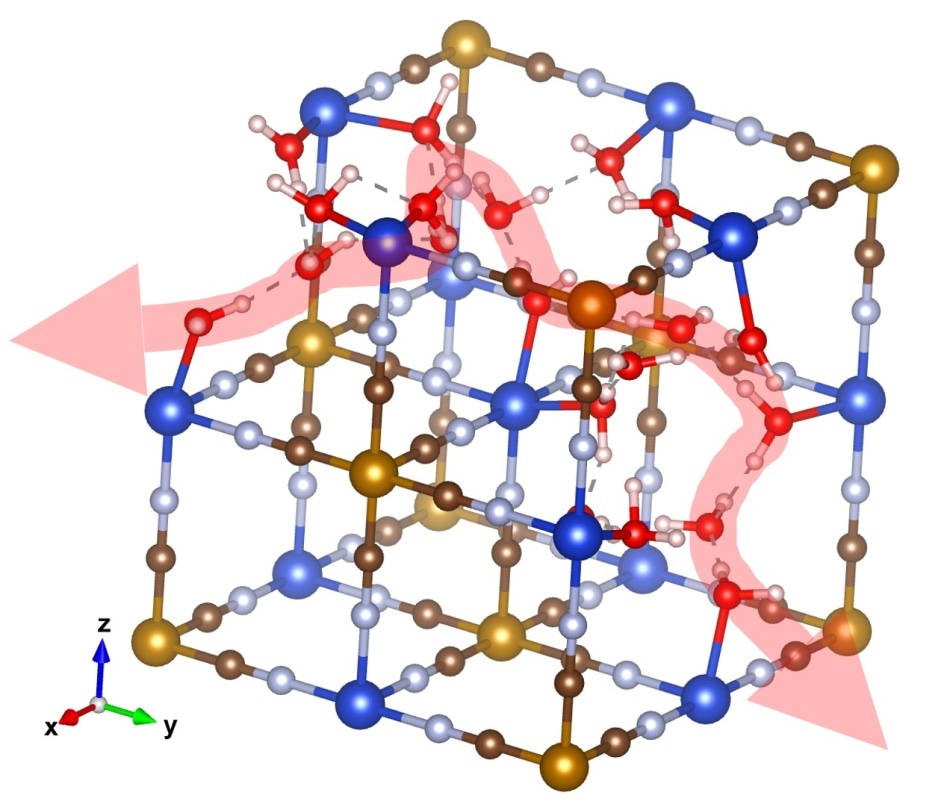Jan 29 2019
Scientists from Oregon State University have discovered that a chemical mechanism first reported more than 200 years ago promises to completely transform energy storage for high-power applications such as electrical grids or vehicles.
 (Image credit: Oregon State University)
(Image credit: Oregon State University)
The team headed by Xiulei (David) Ji of OSU’s College of Science, together with collaborators at the Argonne National Laboratory, the University of California, Riverside, and the Oak Ridge National Laboratory, is the first to show that diffusion may not be required to transport ionic charges within a battery electrode’s hydrated solid-state structure.
This discovery potentially will shift the whole paradigm of high-power electrochemical energy storage with new design principles for electrodes.
Xianyong Wu, Study First Author, Postdoctoral Scholar, Oregon State University.
The results of the study were reported in Nature Energy on January 27th, 2019.
“Coming up with Faradaic electrodes that afford battery’s energy density and capacitor’s power with excellent cycle life has been a big challenge,” stated Ji, associate professor of chemistry. “So far, most of the attention has been devoted to metal ions – starting with lithium and looking down the periodic table.”
However, the collaborative group looked up to hydrogen’s single proton; the group also recollected the theory on charge transport in electrolytes proposed by Theodor von Grotthuss, a German-born Lithuanian chemist, in 1806.
Von Grotthuss was aged just 20 years, and was living in a region plagued by political upheaval, when he published “Memoir on the decomposition of water and of the bodies that it holds in solution by means of galvanic electricity” in a French scientific journal.
In the turmoil of his time and place, he managed to make this big discovery. He was the earliest to figure out how electrolyte works, and he described what’s now known as the Grotthuss mechanism: proton transferred by cooperative cleavage and formation of hydrogen bonds and O-H covalent bonds within the hydrogen-bonding network of water molecules.
Xiulei (David) Ji, Associate Professor of Chemistry, College of Science, Oregon State University.
According to Wu, it works something like this: electrical charge is conducted when a hydrogen atom that bridges two water molecules “switches its allegiance” from one molecule to the other.
The switch kicks disjointed one of the hydrogen atoms that was covalently bonded in the second molecule, triggering a chain of similar displacements throughout the hydrogen-bonding network. The motion is like a Newton’s cradle: Correlated local displacements lead to the long-range transport of protons, which is very different from metal-ion conduction in liquid electrolytes, where solvated ions diffuse long distances individually in the vehicular manner.
Xianyong Wu, Study First Author, Postdoctoral Scholar, Oregon State University.
“The cooperative vibrations of hydrogen bonding and hydrogen-oxygen covalent bonds virtually hand off a proton from one end of a chain of water molecules to the other end with no mass transfer inside the water chain,” added Ji.
According to Ji, the molecular relay race is the core of a wonderfully efficient charge conduit.
“That’s the beauty of it,” stated Ji. “If this mechanism is installed in battery electrodes, the proton doesn’t have to squeeze through narrow orifices in crystal structures. If we design materials with the purpose of facilitating this kind of conduction, this conduit is so ready—we have this magic proton highway built in as part of the lattice.”
In their study, Ji, Wu, and their colleagues demonstrated the exceptionally high power performance of an electrode of a Prussian blue analog, Turnbull’s blue, as referred to by the dye industry. The distinctive contiguous lattice water network within the lattice of the electrode exhibits the “grandeur” promised by the Grotthuss mechanism.
“Computational scientists have made tremendous progress on understanding how the proton hopping really occurs in water,” stated Ji. “But Grotthuss’ theory was never explored to avail energy storage in detail, particularly in a well-defined redox reaction, which had the aim to materialize the impact of this theory.”
Although Ji is very excited about the outcomes of the study, he cautions that there is still more work to be done to achieve ultrafast charge and discharge in batteries that are practical for grid energy storage or transportation.
Without the proper technology involving research by materials scientists and electrical engineers, this is all purely theoretical. Can you have a sub-second charge or discharge of a battery chemistry? We theoretically demonstrated it, but to realize it in consumer devices, it could be a very long engineering journey. Right now the battery community focuses on lithium, sodium, and other metal ions, but protons are probably the most intriguing charge carriers with vast unknown potentials to realize.
Xiulei (David) Ji, Associate Professor of Chemistry, College of Science, Oregon State University.
This study was supported by the National Science Foundation and the U.S. Department of Energy.